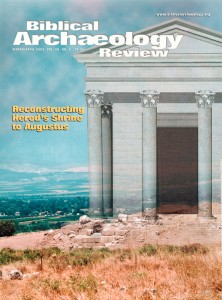
Standing just shy of 12 inches tall, this bell-shaped ceramic figurine from Boeotia, in north-central Greece, represents a stylized female form. On its head—which perches atop a surreally long neck—the ancient artist has painted long hair and eyebrows, and affixed tiny white beads for the irises of the eyes. The figure’s body, made on a pottery wheel, displays two small breasts in relief and numerous painted decorations. On the front of the body, two heraldic water birds flank a swastika and, lower down, an hourglass motif. A broad necklace (also painted on) hangs between the figure’s breasts. The legs are suspended from holes at the sides of the body; they may not have originally belonged to the figure, as they are made of a slightly redder clay. Scholars believe bell-figures like this one had a cultic, possibly funerary, function. But precisely what remains a mystery.

Boeotia was a center for the manufacture of pottery in archaic Greece, and this object is typical of the Late Geometric style that flourished there during the last decades of the eighth century B.C. The Late Geometric style is characterized by symmetrical depictions of animals such as deer, horses and birds, as well as various geometrical motifs (such as the concentric circles that appear just below this figure’s shoulders). Most surviving examples of Late Geometric pottery are drinking vessels, excavated from ancient graves.
Already a library member? Log in here.
Institution user? Log in with your IP address.

